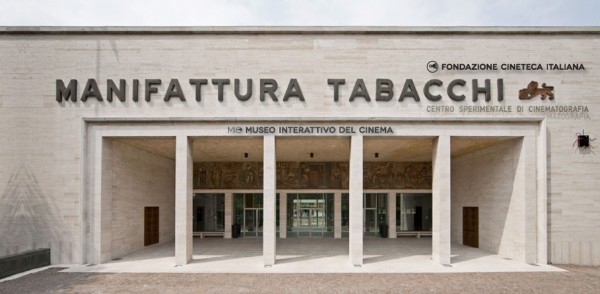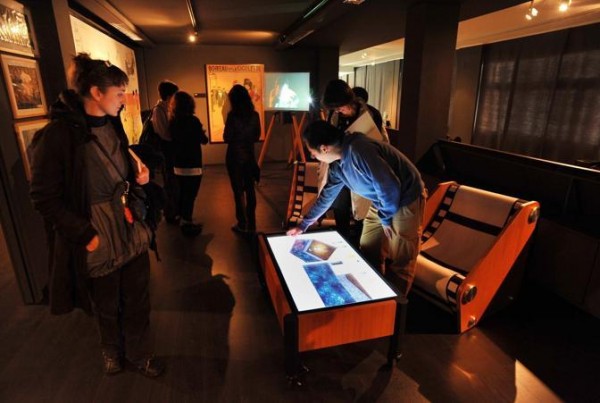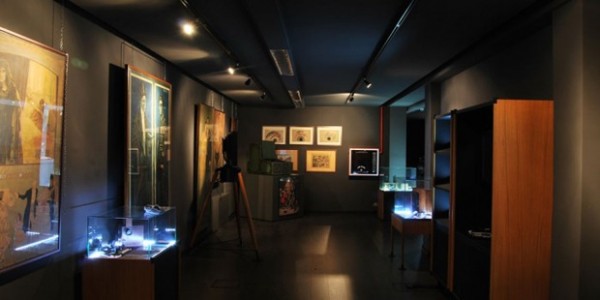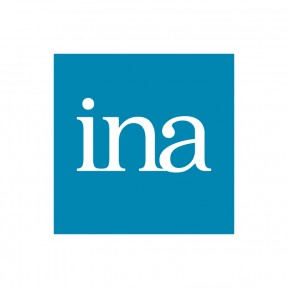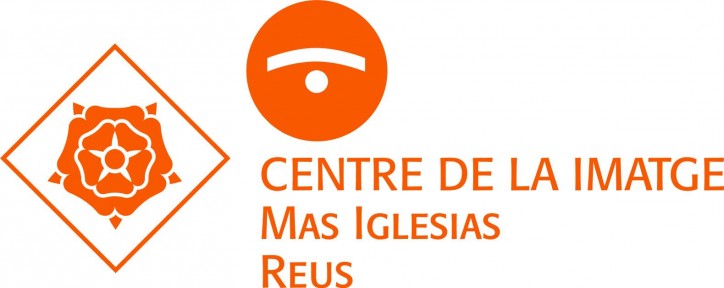
Since 2009 the Fondazione Cineteca Italiana has been operating at the former Manifattura Tabacchi premises, set at the north periphery of Milan but well connected to the city centre. They house the Cineteca Headoffices, the Film Archive with post-production Laboratory and MIC-Museo Interattivo del Cinema. The presence of other realities such as Municipal Film Schools and the Lombardy branch of the Cineteca Nazionale of Rome make this centre a unique audiovisual pole in Milan.
The Cineteca Italiana, founded in Milan in 1947, was the first Italian archive to join FIAF in 1948. Its statutory tasks are collecting, preserving and rescuing the film heritage, disseminating the moving image culture. As from 1996 it is a ‘private Foundation of public interest’. Though mainly financed by the Ministry of Culture, it often depends on private resources to carry out restoration projects etc.
Thanks to the regional funding, a new Archive, equipped with adequate shelving and hardware opened in 2014 in the Manifattura area, on two subgrade storeys of ca 3,000 sq. mt. Its core is a digital restoration and post-production Lab. Besides the Cineteca’s historical 35mm film collections on acetate/polyester, the new vaults also host under the ‘Legal Deposit’ clause all audiovisual products released over the Lombard territory, thereby serving as a regional “collector” for images on film.
As from Fall 2015 the new Archive is made publicly visible to small groups, upon reservation, thus abolishing the traditional barriers between general public and insiders. The Tunnel of Dreams passageway, fitted with panels explaining the passage from analogue to digital, links Archive and Lab; tools such as audio and video stations, stereo earphones, smart glasses (Epson Moverio BT-200) allow the visitor to enjoy Augmented Reality applications and HD or 3D contents.
In this way the Archive guided tour rounds off the visit to the MIC, stretched on 300 sq. mt. next door to the Cineteca headquaters, where the cinema history intertwines with virtuality, and where most updated technologies web 2.0 are based on play and interactivity.
Heritage:
Film stock: over 25,000 titles from all over the world, from any ages, mainly on 35mm support. Nearly 60% are nitrate cellulose films of prominent historical relevance, from the origins to the end of 1950.
Non-film collection: it undergoes constant digitization for access purposes, and consists of:
– ca. 100,000 film stills
– ca. 50,000 film posters
– ca 10,000 among books and magazines, comprising rare items of the Twenties and Thirties
Рa number of pre-cinema apparatuses, optical devices, original Lumi̬re cameras, projectors, posters, memorabilia etc.., on display at our MIC Filmmuseum.
Main activities:
– film preservation and restoration. Our film stock, constantly increased by new acquisitions/donations, is preserved according to good practice, restored to be then premiered in festivals, or digitized for access purposes
– educational activities: guided tours and customized itineraries for schools in our Film Museum/Archive, lectures, screenings, workshops etc.
– film programming all year round, in our 3 film theatres; two yearly Festivals respectively on Italian Cinema (since 2003) and on Kid Films (since 2008). An intense communication activity is carried out through newsletters, press releases, our website page, facebook and Twitter
– film exchange and cooperation on a wide range of projects (also European) with other Fiaf and non-Fiaf archives, and cultural institutions throughout the world
– research activity: is carried out by the Cineteca expert archival staff on diverse film stocks from our archive, from the silent films to a corpus of Italian animation cinema which is one of the Cineteca’s highlights
– editorial activity: publication of books, DVDs, booklets etc..
FCI specific interest for archive footage as a creative and educational material
Cineteca Italiana has been participating over the last 15 years to a number of European projects, mostly focusing on the preservation and restoration of the European film heritage: as all the other archives compelled to face the drama of a quick and severe deterioration and decay of film supports, especially the nitrate-based ones, we welcome any action directed towards saving films, and any financial source usable for this end. The first and foremost duty of an archive is actually that of rescuing its heritage from loss or damages caused by time injuries.
Other projects centered on cataloguing and digitizing with the purpose of creating online portals were very useful to fill the gap our archive had been experiencing in past years, where the costs implied in these fundamental activities prevented us from carrying them out as intensely as they would have deserved.
More recently, the Grundtvig Project offered a good opportunity for our archive to provide know-how, training, services, and audiovisual material finalized to the education and learning of adult people living in European houses of detention.
These three examples of different Projects move however along the same direction, and their final goals are in the long run the same: accessibility, sharing, dissemination.
Now the In Living Memory Project – a sort of continuation/extension of the previous Grundtvig – is basically resting on a criteria that most archives would have sort of disliked until not too many years ago: letting the general public, and not only the insiders, step ideally into the most ‘secret’ archive vaults, once sheltered by any means from profane eyes. ‘Access’ seems to be the magic word from which should benefit both archives – which increase their knowledge and insight – and researchers/exploiters – who can use an invaluable material to their own cultural purposes.
Fondazione Cineteca Italiana has been of late making great progresses towards an always increasing accessibility to its archive materials, and of course the digital advent has played in this regard an essential role. This technological asset meets with another key point which has lately become for us a real ‘must’: the educational vocation, that is making any kind of film footage and audiovisual material a tool fit to have an outstanding role in educating, increasing knowledge and know-how, prompting creative ideas on an inventive use of images. The artworks already created, such as e.g. the videoletters including film excerpts (be it fiction, or documentary, or animation) just demonstrate how helpful the archives may be in stimulating a non-formal education process of e.g. disadvantaged people, having thus also a high social value. It will be surely surprising to discover how a historical event may be re-read through one’s own intimate taste and sensibility, and what subtle differences of meaning may be conveyed by a different utilization of the same material. Our Foundation is no less than proud to contribute to this cultural process by opening its archive to those wishing to make good use of it.
Fondazione Cineteca Italiana
v.le Fulvio Testi 121 – 20162 Milano
tel. ++39-02-8724.2114
fax ++39-02-8724.2115

